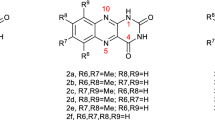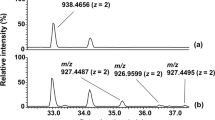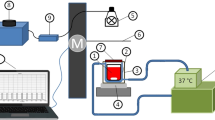Abstract
The photosensitizing effect of haematoporphyrin (HP) on human cells of the established line NHIK 3025 has been studied. Fluorescence measurements show that HP is bound to these cells. Serum proteins also bind HP, and the presence of 10% human serum during incubation with HP (3 X 10(-4)M) reduces the cellular uptake of HP by 75% or more. The photosensitized inactivation is enhanced when the cells are suspended in D2O-buffer during irradiation. This indicates that singlet oxygen is involved in the inactivation. Two findings indicate that the photoinduced damage is repairable: firstly, the fraction of cells surviving a given light dose decreases with decreasing irradiation temperature, and secondly, the survival curves have a shoulder at low exposures of light.
This is a preview of subscription content, access via your institution
Access options
Subscribe to this journal
Receive 24 print issues and online access
$259.00 per year
only $10.79 per issue
Buy this article
- Purchase on Springer Link
- Instant access to full article PDF
Prices may be subject to local taxes which are calculated during checkout
Similar content being viewed by others
Rights and permissions
About this article
Cite this article
Moan, J., Pettersen, E. & Christensen, T. The mechanism of photodynamic inactivation of human cells in vitro in the presence of haematoporphyrin. Br J Cancer 39, 398–407 (1979). https://doi.org/10.1038/bjc.1979.72
Issue Date:
DOI: https://doi.org/10.1038/bjc.1979.72
This article is cited by
-
Photo-oxidative killing of human colonic cancer cells using indocyanine green and infrared light
British Journal of Cancer (1999)
-
Photodynamic therapy for intracranial neoplasms
Molecular and chemical neuropathology (1994)



